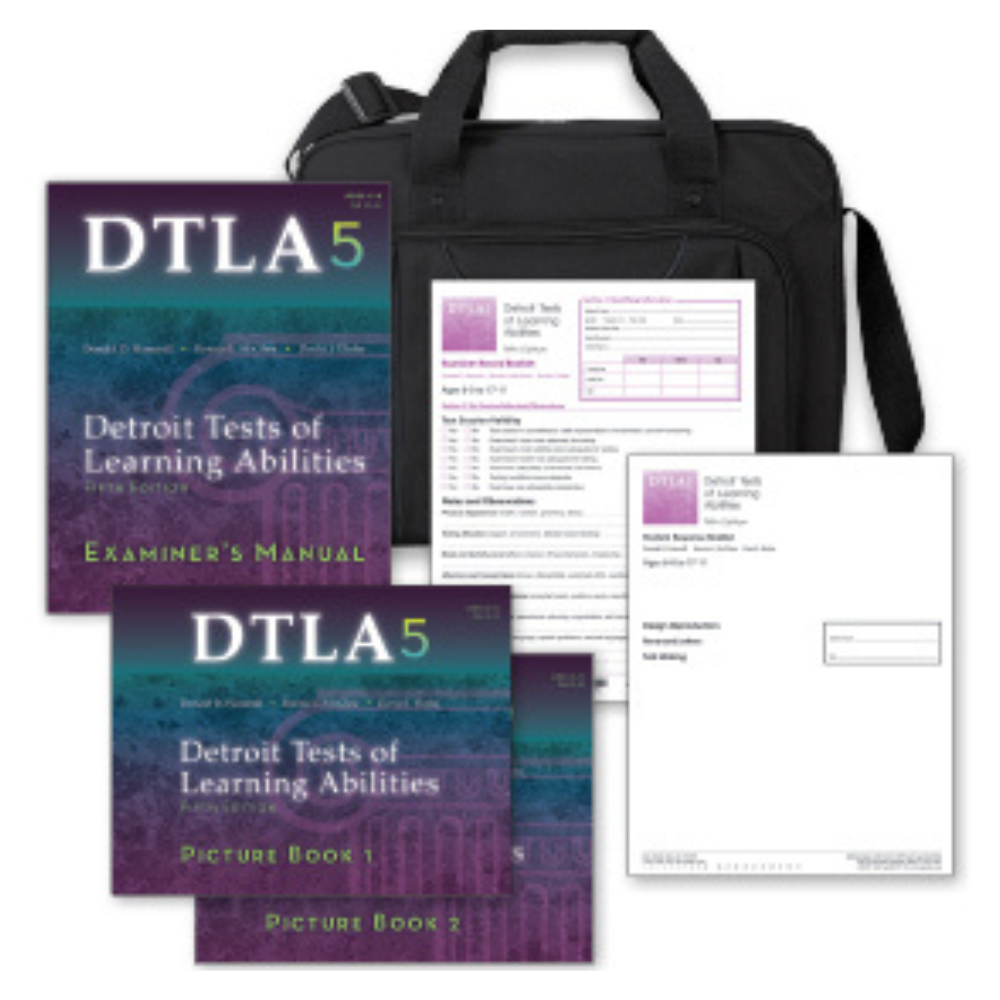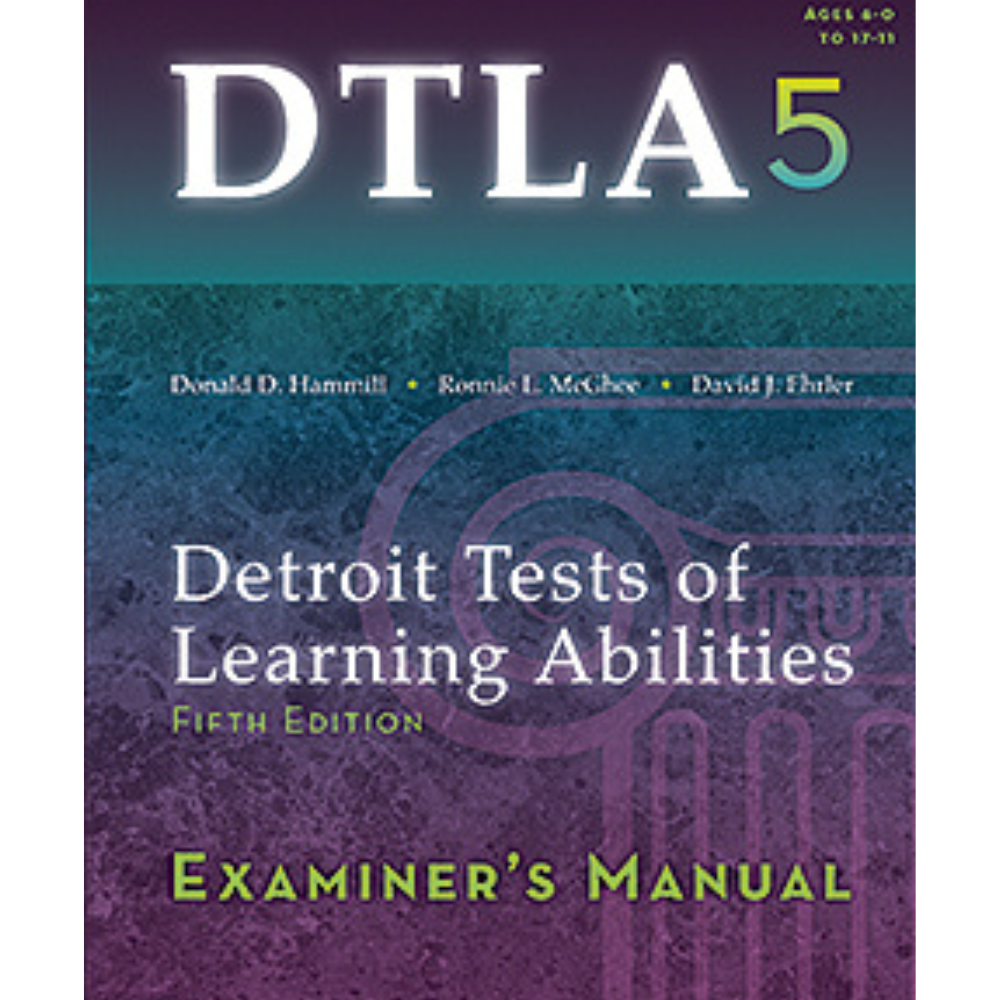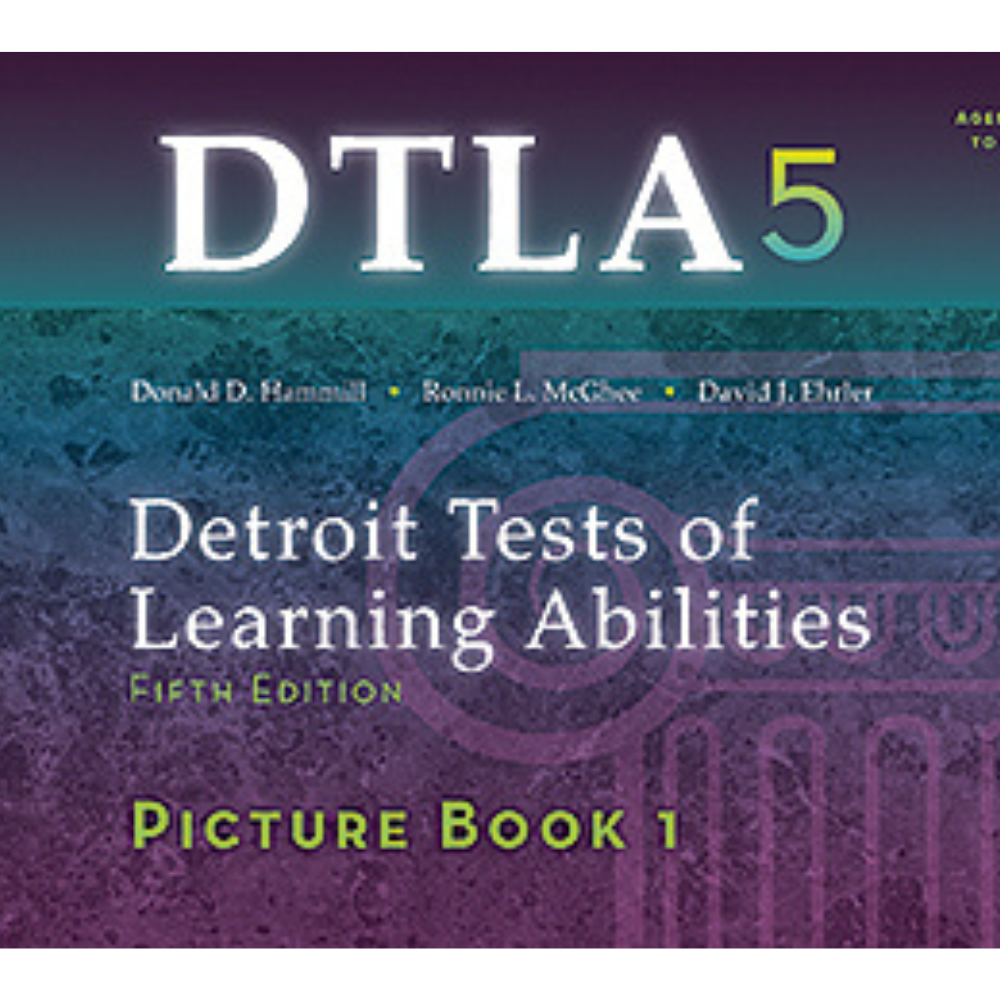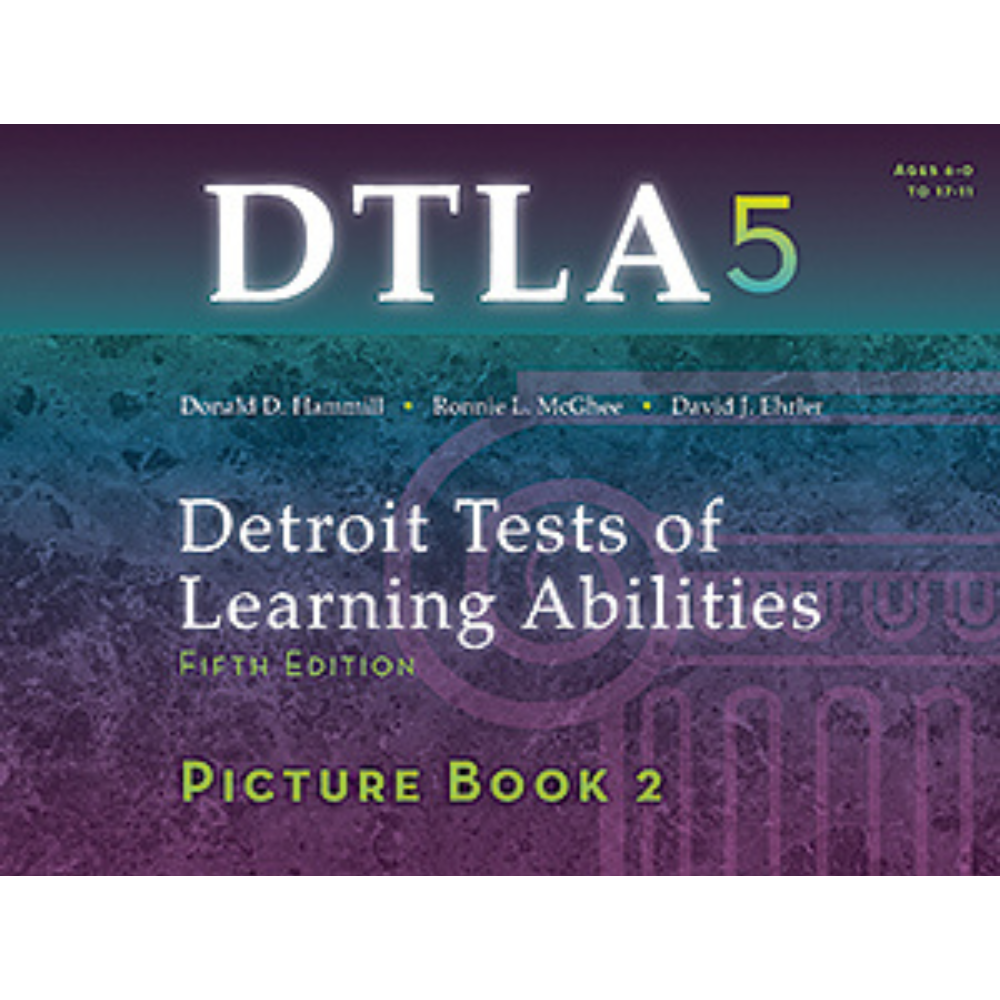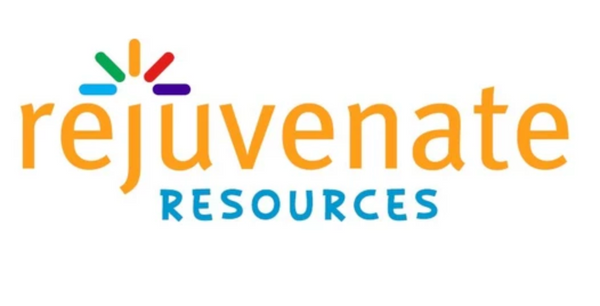SKU:#14590
Detroit Tests of Learning Abilities (DTLA-5)
Detroit Tests of Learning Abilities (DTLA-5)
Fifth Edition
Grades 1 - 12 | Ages 6 - 17
By Donald D. Hammill, Ronnie L. McGhee, and David J. Ehrler
Couldn't load pickup availability
- We Accept Purchase Orders!
- Fully Secured SSL Checkout
- 30-Day Return Policy
Share
The oldest and most venerable of the tests of specific cognitive abilities.
Administration: Individual
Ages: 6-0 through 17-11
Scoring: Online Only
Test Level: B
Testing Time: 40 minutes to 2 hours
Subscales:
- Overall Composite: Global Composite Score
- Cognitive Domain Scores: Reasoning Ability, Processing Ability
- Subdomain Scores: Acquired Knowledge, Verbal Comprehension, Nonverbal Problem Solving, Verbal Memory, Nonverbal Memory, Processing Speed
The Detroit Tests of Learning Abilities–Fifth Edition (DTLA-5) is ideal for identifying intra-individual ability strengths and weaknesses.
12 Subtests
In this update, the Story Sequences, Story Construction, and Design Sequences subtests were eliminated and 7 new subtests were added:
- Humanities/Social Studies
- Science/Mathematics
- Word Associations
- Geometric Matrices
- Geometric Sequences
- Trail Making
- Rapid Naming
Five tests from the previous edition remain:
- Word Opposites
- Sentence Imitation
- Word Span
- Design Reproduction
- Reversed Letters
9 Composites
The results of the subtests can be combined to form 9 composites.
Six of these composites represent different cognitive subdomains:
- Acquired Knowledge
- Verbal Comprehension
- Nonverbal Problem Solving
- Verbal Memory
- Nonverbal Memory
- Processing Speed
Two of these composites represent larger, important cognitive domains:
- Reasoning Ability
- Processing Ability
One global composite is formed by combining the results of all 12 of the DTLA-5 subtests and represents general cognitive ability.
Examiners can administer the subtests from one or both of the DTLA-5 domains, depending on the purpose of the evaluation.
NEW Online Scoring and Reporting System
Access to the all-new DTLA-5 Online Scoring and Report System is now included with the purchase of each DTLA-5 Complete Kit and with the purchase of every replacement pack of Examiner Record Booklets.
This scoring and reporting system is a quick, efficient tool for:
- Entering test-session data
- Converting subtest item scores or subtest total raw scores into a scaled score
- Converting sums of scaled scores into composite index scores, percentile ranks, and upper and lower confidence intervals
- Comparing DTLA-5 scores to identify significant intraindividual differences; and
- Obtaining a score summary and narrative report
4 Types of Normative Scores
The DTLA-5 Online Scoring and Report System yields four types of normative scores:
-
Age equivalents. Age equivalents are indexes of relative standing that translate subtest raw scores to what are commonly termed mental ages.
-
Percentile ranks. Percentiles provide the examiner with an index that is easily understood by parents and others with whom the test results are to be shared.
-
Subtest scaled scores. Subtest scaled scores are based on a distribution having a mean of 10 and a standard deviation of 3.
-
Composite indexes. Composite indexes are based on a distribution having a mean of 100 and a standard deviation of 15.
New Features of the DTLA-5
- The DTLA-5 theoretical model and constructs underlying the test were re-conceptualized based on the work of respected cognitive theorists (e.g., Anastasi & Urbina; Carroll; Cattell; Dehn; Horn; Salvia, Ysseldyke, & Witmer).
- New and extensive studies of the floors, ceilings, and item gradients for the DTLA-5's subtests and composites were conducted. The results indicate the test has consistently excellent ability across all ages and ability levels to not only measure the cognitive ability of students but also detect minor fluctuations in those abilities.
- New and extensive studies of test bias (both differential item functioning and subgroup comparison studies) were conducted, indicating the DTLA-5 possesses little or no bias in regard to gender, race, or ethnicity.
- New and extensive criterion-prediction validity studies were conducted to demonstrate the validity of the DTLA-5's subtests and composites, including diagnostic accuracy and receiver operating characteristic/area under the curve (ROC/AUC) analyses. Diagnostic accuracy analyses are particularly rigorous techniques for establishing validity involving the computation of a test's sensitivity index, specificity index, and ROC/AUC. These studies indicate that the DTLA-5 is a highly valid measure of cognitive ability.
- New and extensive studies of construct-identification validity, including studies of age differences, subgroup performance, relationship to achievement, and confirmatory factor analysis of the test's structure, were conducted. These studies indicate that the DTLA-5's internal structure is sound and its results are valid for a wide variety of subgroups, as well as for a general population.
- Inclusion of the software eliminates the need to include normative tables in the Examiner's Manual and ensures accurate application of basals and ceilings and calculation of scores.
- Finally, a slight but important change in the name of the test, substituting abilities for aptitude in the title. Anastasi (1980) probably spoke for most test developers (and users) alike when she wrote, "If a benevolent wizard were to give me the power to eliminate four words from the tester's vocabulary, I would choose "intelligence," "aptitude," "abilities," and "achievement." Then if a malevolent wizard were suddenly to appear and demand that I take back one word, I would choose to retain "abilities" (p. 1). Anastasi preferred the word abilities to the others because it had "acquired fewer surplus meanings" (p. 3) and implies that the qualities measured can be developed, modified, or learned. More of Anastasi's views are discussed in Chapter 6 under Content-Description Validity.
Demographic Characteristics
DTLA-5 was built with the AERA/APA/NCME's 2014 standards for technical adequacy clearly in mind. The test was normed on 1,383 students residing in 30 states and 354 zip codes. The demographic characteristics of the normative sample are representative of the U.S. population as a whole (as reported by the U.S. Bureau of the Census, 2015) with regard to gender, race, ethnicity, household income, educational attainment of parents, and geographic distribution. Norms are stratified by age.
Reliability
The reliability of the DTLA-5 was investigated using estimates of content sampling and time sampling. Internal consistency reliability coefficients (content sampling) range from .79 to .90 for the subtests, from .87 to .95 for the subdomain composites, and from .95 to .98 for the domain and global composites. Time sampling was investigated using the test–retest technique. Test–retest coefficients range from .72 to .90 for the subtests, from .80 to .92 for the subdomain composites, and from .93 to .96 for the domain and global composites.
Validity
Content-Description Validity
Evidence of the validity of DTLA-5 test scores is provided for content-description validity, criterion-prediction validity, and construct-identification validity. Content-description validity is demonstrated through careful documentation of subtest and item selection and analysis. A particularly powerful method for content-description validity is the use of conventional item analysis procedures, which allow the identification of good items and the deletion of bad items.
Criterion-Prediction Validity
Criterion-prediction validity is explored by comparing the results of the DTLA-5 with those of other cognitive tests, such as the CAS2, PTONI, SB-5, UNIT2, WISC-IV, WISC-V, and WJ III. New and extensive criterion-prediction validity studies were conducted to demonstrate the validity of the DTLA-5's subtests and composites, including diagnostic accuracy and receiver operating characteristic/area under the curve (ROC/AUC) analyses. Diagnostic accuracy analyses are particularly rigorous techniques for establishing validity involving the computation of a test's sensitivity index, specificity index, and ROC/AUC. These studies indicated that the DTLA-5 is a highly valid measure of cognitive ability.
Construction-Identification Validity
Construct-identification validity is demonstrated by including studies of age differences, subgroup performance, relationship to achievement, and confirmatory factor analysis of the test's structure. These studies indicated that the DTLA-5's internal structure is sound and its results are valid for a wide variety of subgroups, as well as for a general population.
Controlling for Test Bias
The DTLA-5 was built to minimize the effects of bias. Numerous steps were taken to detect and eliminate sources of cultural, gender, and racial bias. First, the effects of bias were controlled and minimized through the inclusion of minority and disability groups in the normative sample. Second, the examination of reliability and validity information was presented for all these subgroups. A particularly powerful element of content-description validity is the demonstration of excellent internal consistency reliability for the different racial, ethnic, and gender groups. Third, extensive studies of test bias (both differential item functioning and subgroup comparison studies) were conducted, indicating the DTLA-5 possesses little or no bias in regard to gender, race, or ethnicity.
The Complete DTLA-5 Kit Includes:
- Examiner's Manual
- Picture Books 1 and 2
- 25 Examiner Record Booklets
- 25 Student Response Booklets
- Sturdy storage box
©2018
